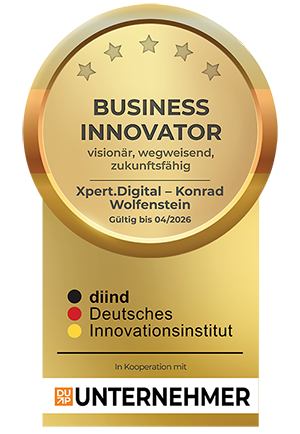Published on: November 15, 2024 / Update from: November 15, 2024 - Author: Konrad Wolfenstein

Intranet vs. Marketing & PR: The underestimated because invisible power of internal communication – Image: Xpert.Digital
Company whisperer: Effective intranet communication for corporate goals
Intranet as a home: The special role of internal communication
Intranet-based corporate communication differs fundamentally from classic marketing and public relations (PR) because it is aimed at internal target groups and specific communication goals within a company. Here are the main differences and how they work:
Focus and target groups
Intranet communication
This form of communication is aimed exclusively at a company's employees. It aims to ensure the internal flow of information, strengthen the corporate culture and support organizational processes. Typical means are intranet platforms, newsletters, employee magazines, emails and internal events.
Marketing and PR
These disciplines are primarily externally oriented. Marketing's job is to promote products or services and encourage direct actions such as purchases. PR, on the other hand, focuses on building and maintaining the company's public image. Both disciplines work with external target groups such as customers, investors or media.
Goals and strategies
Intranet communication
The main goals are to promote employee motivation, strengthen a sense of community and ensure a smooth exchange of information. It also contributes to internal transparency and supports dialogue between different hierarchical levels.
marketing
The focus here is on sales promotion and addressing customers directly. Marketing strategies are often designed for the short term to achieve immediate results such as increased sales.
PR
PR pursues long-term goals such as building trust, maintaining relationships with various stakeholders and improving the company's image. PR works indirectly by influencing the company's image through media and communication channels such as social media.
Communication channels
Intranet communication
Uses internal channels such as the intranet, email systems or internal newsletters. These channels are specifically designed for internal use and often offer interactive features such as forums or surveys to promote dialogue between employees.
marketing
Uses external channels such as advertising (TV, radio, online), social media, email marketing or search engine optimization (SEO) to target customers.
PR
Relies on press releases, media work, influencer collaborations and events to present the company positively to the public.
Measurability
Intranet communication
Measuring success is often more difficult than in marketing or PR. It is often based on qualitative factors such as employee satisfaction or feedback from internal surveys.
marketing
Is highly data-driven and uses tracking tools to measure click-through rates, conversions and other KPIs (key performance indicators).
PR
The impact of PR measures can often be measured indirectly. Indicators of success can be media coverage, reach on social networks or the general perception of the company.
There are interfaces
Although intranet communication is internal and marketing and PR are externally oriented, there are interfaces. Strong internal communication can positively influence a company's external image. If employees are well informed and identify with the company, they often pass on this positive perception to the outside world. Additionally, marketing and PR departments must work closely together to communicate consistent messages both internally and externally.
Beware, misstep: Avoid these intranet blunders
When operating a company intranet, numerous mistakes can be made that affect its effectiveness and acceptance by employees. Here are some of the most common mistakes:
1. Outdated or inaccurate content
If content is not updated regularly, employees lose trust in the relevance of the intranet. Outdated information can lead to misunderstandings and greatly reduce the usefulness of the system.
2. Lack of usability
An intranet must be intuitive and easy to use. A poor user interface (UI) or complicated navigation can cause employees to avoid the intranet or use it ineffectively. A user-friendly design and a clear structure are crucial for success.
3. Insufficient search function
Ineffective search functionality is a common problem. When employees cannot find the information they need quickly and easily, this leads to frustration and reduced productivity. This can be exacerbated by an overloaded data structure or a lack of clear separation between current and outdated documents.
4. No clear governance and structure
Without clear rules for managing content, the intranet often becomes a “repository” for all sorts of things. This leads to an overload of irrelevant or outdated information, further undermining the efficiency of the system.
5. Lack of personalization
An intranet that doesn't offer personalized content based on employees' roles or interests can quickly seem irrelevant. Employees should only see the information that is relevant to them to avoid overload and disinterest.
6. Limited mobility
In today's working world, it is important that employees can access the intranet from mobile devices. A lack of mobile support can limit flexibility and particularly disadvantage mobile or remote teams.
7. Security and privacy issues
Inadequate security measures can result in sensitive company data being compromised. It is important to implement robust security protocols to prevent data breaches.
8. Entry barriers are too high
If access to the intranet is complicated or there are many obstacles (e.g. complicated login procedures), employees will be less willing to use it regularly. Easy login and integration into existing systems (e.g. Active Directory) are crucial.
9. Lack of integration with other systems
An intranet should be seamlessly integrated with other key company systems such as HR software or email platforms. If this is not the case, inefficiencies and duplicate work processes arise.
10. Setting goals that are too big
Unrealistic expectations of the intranet can have a demotivating effect if they are not achieved. Instead, small, achievable goals should be set to achieve quick wins and promote acceptance of the system.
11. Poor performance and long loading times
Performance issues such as slow loading times or system crashes during high traffic can significantly impact intranet usage and cause user frustration.
By avoiding these common mistakes, a company intranet can operate successfully and develop its full functionality as an internal communication and collaboration tool.
Suitable for:

